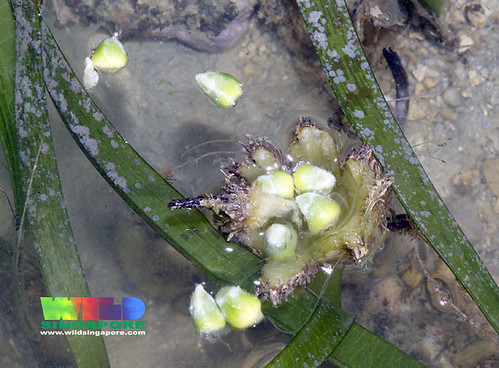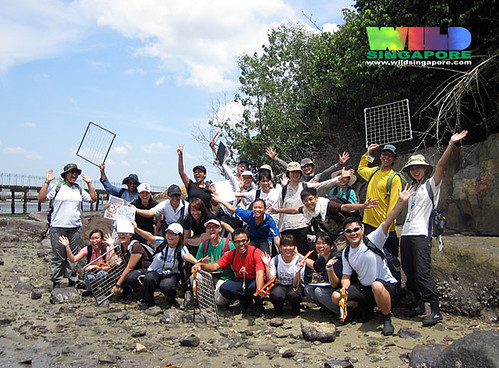 |
| TeamSeagrass in 2008 when seagrasses were still lush. |
From Growing problem for Singapore's seagrass by Jose Hong, Straits Times AsiaOne 29 Dec 16,
"Around three to four years ago, Dr Siti Maryam Yaakub, started noticing that most of the flowers and fruits had simply stopped appearing.What is seagrass sex?
Seagrass populations can grow by cloning themselves, and long-term surveys have indeed seen certain meadows increasing in size, such as those at Chek Jawa on Pulau Ubin.
But Dr Siti said this clonal growth - if it is indeed what Singapore's seagrass are doing could mean all the new seagrass are equally vulnerable to stressors like disease, making it more likely for entire new populations to die at the same time.
Furthermore, without seeds lying around in the environment, it would be much harder for new plants to return.
Ms Samantha Lai, a PhD candidate at the Experimental Marine Ecology Lab at the National University of Singapore (NUS), said there was already one such case on the shores of Pulau Semakau.
In 2009, a seagrass meadow off the island suddenly died, and aside from a few scattered patches of seagrass, the area remains barren, she said.
Ms Lai said environmental factors were also to blame, but added that one of the consequences of not having enough sexual reproduction "is not having enough seedlings or seeds to help the recovery of Semakau".
Tape seagrasses have very long leaf blades that can reach 1.5m. Like all seagrasses, they produce flowers! Female Tape seagrass flowers are large with three long petals. Male Tape seagrass flowers are tiny white blobs that float in the water (they resemble styrofoam beads).
The floating male flowers meet female flowers and pollination happens! Eventually, a fruit forms and when it's ripe, it opens and seeds float away to settle down and grow into new Tape seagrass plants.
Why are seagrasses important?
Meadows of seagrass leaves create a miniature underwater forest. Small plants and animals thrive in these thickets. Seagrasses provide shelter for many animals that are not adapted for fast swimming (e.g., the seahorse and filefish). These include juveniles of larger fishes and animals that later move out into deeper waters and include commercially important fishes and sea creatures. Seagrass leaves also provide a place for animals to lay their eggs, and for small animals to settle down.
 |
| The Alligator pipefish is found among seagrasses. |
Seagrasses disappearing
Since 2010, I noticed seagrasses disappearing from Cyrene Reef, Terumbu Semakau and Pulau Semakau. At the same time, seagrasses on Labrador and Sentosa seems to have been spared.
Cyrene Reef
Cyrene Reef has some of Singapore's best seagrass meadows. With abundant growths of 7 of out the 12 seagrass species recorded for Singapore. For a long time, we enjoyed views of lush seagrasses on Cyrene. Tape seagrasses with long leaf blades and regularly flowering.
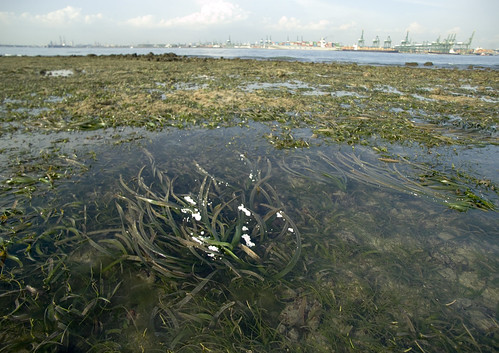 |
| Cyrene Reef, 2007: Tape seagrass flowering with long leaf blades. |
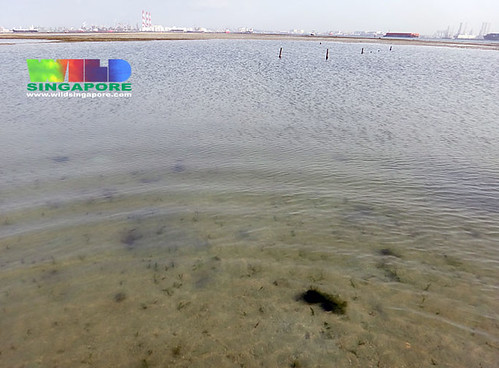 |
| Cyrene Reef, 2012: Seagrasses disappearing. |
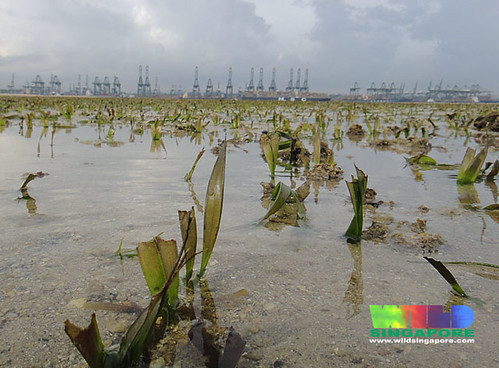 |
| Cyrene Reef 2011: Tape seagrasses cropped short. |
Terumbu Semakau
Terumbu Semakau also had impressive seagrass meadows with 6 species of seagrasses. In Mar 2011, I noticed seagrasses disappearing from Terumbu Semakau as well. They were still OK when we visited in Jun 2010.
 |
| Terumbu Semakau 2010: Lush seagrass meadows |
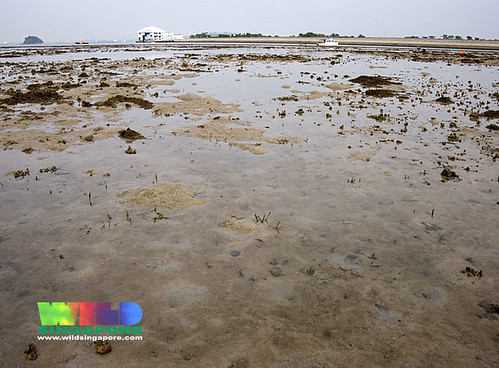 |
| Terumbu Semakau 2012: Seagrasses disappearing |
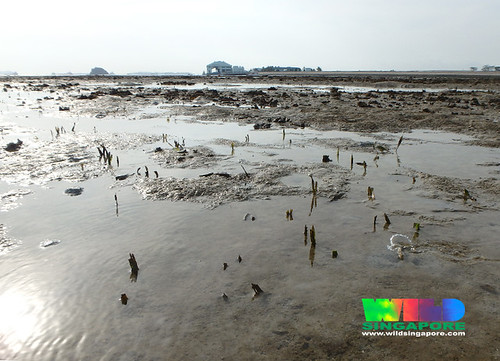 |
| Terumbu Semakau 2015: Tape seagrasses still cropped short. |
Pulau Semakau
The biggest heartbreak was to see the vast lush seagrass meadows of Pulau Semakau vanish. Pulau Semakau good growths of 7 species of seagrasses. And lots of long Tape seagrasses, producing flowers, was a delightful encounter in the past.
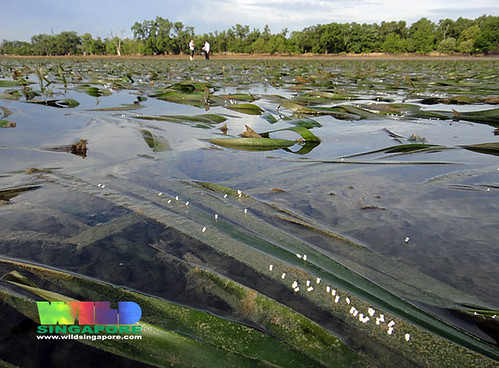 |
| Pulau Semakau 2010: Flowering Tape seagrass |
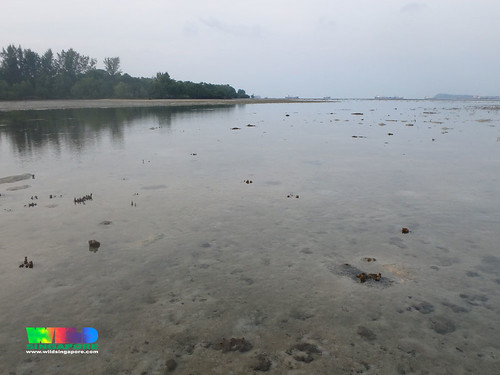 |
| Pulau Semakau 2016: Seagrasses still sparse. |
 |
| Pulau Semakau 2014; Cropped Tape seagrass. |
The meadows are so lush at Pulau Semakau that when I initiated guided intertidal walks here, I insisted that we only cross at the shortest path through the seagrasses and that we stick to the same path for all walks. So that we minimise the 'death zone' created by people walking on the seagrass.
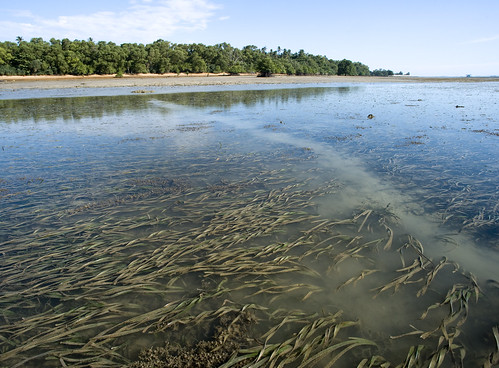 |
| Pulau Semakau 2008: 'Death zone' through lush seagrasses |
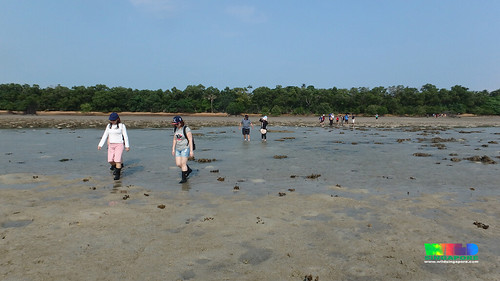 |
| Pulau Semakau 2016: 'Death zone' |
Surprising Survivals
Surprisingly, through out this 'die back' at Cyrene, Terumbu Semakau and Pulau Semakau, the Tape seagrasses at Labrador and Sentosa remain lush with long leaf blades. And they continued to flower.
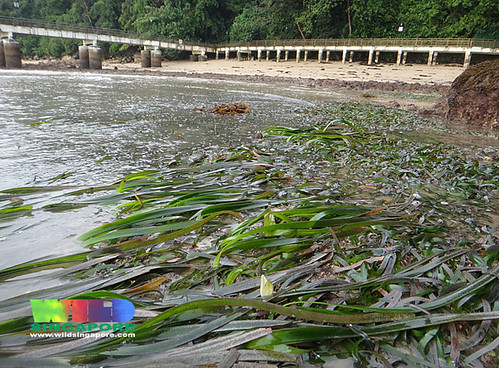 |
| Labrador 2013: Tape seagrasses flowering |
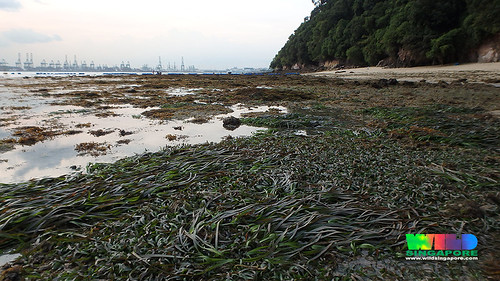 |
| Sentosa 2015: Tape seagrases with long leaf blades |
You CAN make a difference for our seagrasses!
Join the volunteers of TeamSeagrass who have been monitoring Singapore's seagrasses since 2007!
Data from TeamSeagrass and observations by TeamSeagrass volunteers have been vital to observing trends such as the disappearing seagrasses. TeamSeagrass gathers data to better understand and protect our meadows and the animals that depend on them. More details on the TeamSeagrass blog.


